Jo Sandman
Transmissions
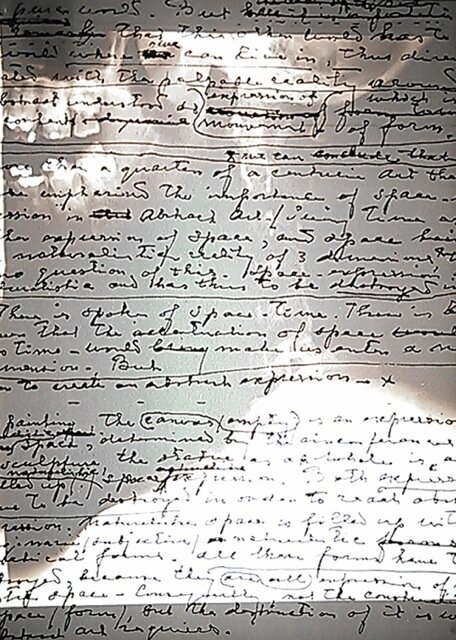
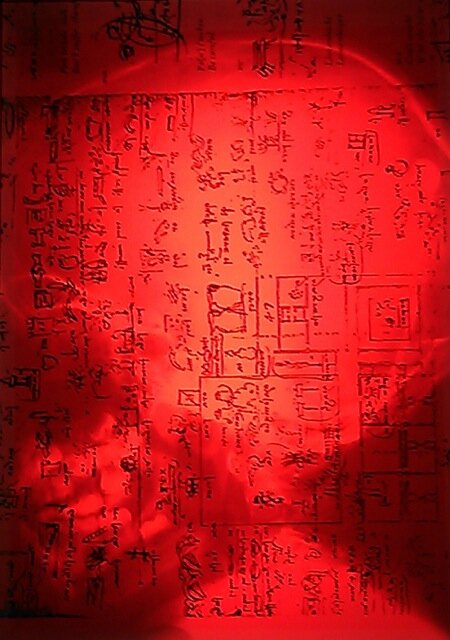
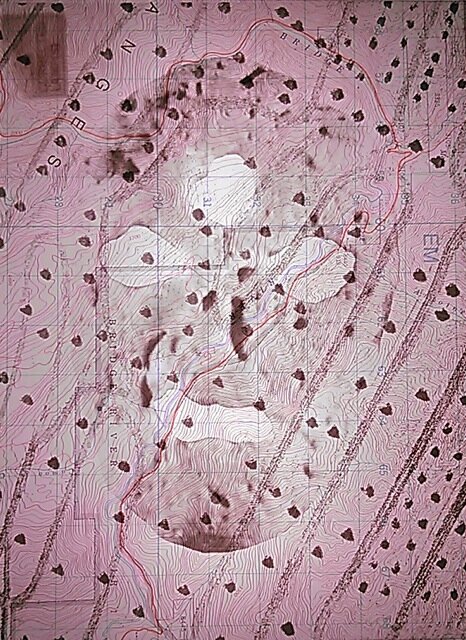
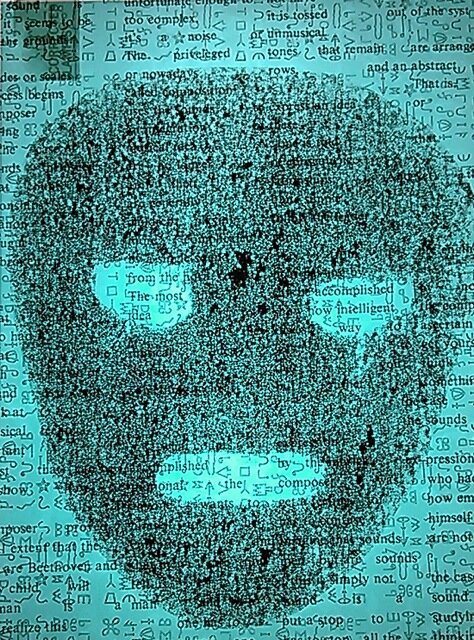
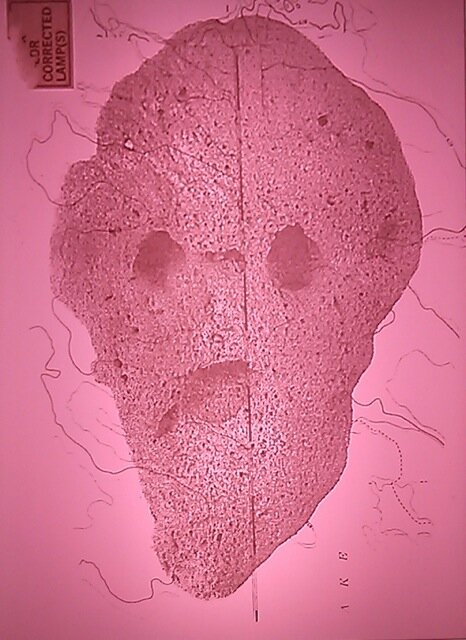
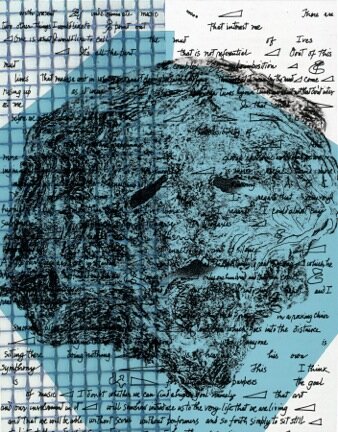
Jo Sandman began her career in 1951 with a residency at Black Mountain College. For more than six decades, she has been actively exploring her art as a sculptor, painter, photographer, and installation artist. Intrigued by Robert Rauschenberg and Cy Twombly’s use of unusual and different materials, she began to incorporate uncommon elements into her own work—cement, inner tubes, found objects, rocks, shells, rubber piping, to name a few—creating objects painted without paint and defying our understanding of specific category. Earlier works were minimal and abstract, yet with each evolution she has referenced previous images creating a continuous and expanding body of work. The process has always been as important as the subject matter.
Transmissions is a continuation of her investigations of the human face. We see references from previous series: Momento Mori, Metamorphos & Twice where she incorporated found stones and shells resembling miniature skulls which inspired her drawings, photograms, and photographs. In Light Memory and Chiro Heads, she has used film x-rays as her negatives giving vivid dimension and life to the clinical. Transmissions images are transparent layers housed in a free-standing plexiglass frame. Placed on pedestals and presented at eye level they adapt a humanlike quality as they engage you in a visual conversation and exploration of layers, depth, and illusion.
‘Transmissions’ consists of an investigation of the human face, its masks and its spirit. Each image of an abstracted human face derives from two sources: a “found” object in nature (of coral, stone or shell) which I have altered, or from x-ray films of the human skull.
To each initial image I add a second element which conveys the context of the individual’s life in society. A grid or a computer board indicates the idea of entrapment, or unease in society. An aerial landscape or extended text stands for a life of freedom and intellect. The third and final layer, a bright color plane conveys the spirit of the individual.
The transparency of the layers in this work enables the images to join together to form the final characterization of the individual, and invites the viewer to experience the shift of different views as one sees the work from front or back and to find a sense of pentimento . -Sandman
Sandman’s work appears in numerous private and public collections, some which include: The Addison Gallery of American Art, The Boston Public Library, The Dallas Museum of art, The Danforth Museum of Art, The DeCordova Sculpture Park and Museum, The Rose Museum, The Seattle Museum of Art, and the Weatherspoon Gallery at the University of North Carolina, Greensboro.
Thomas J. Gustainis
The Body Memorial
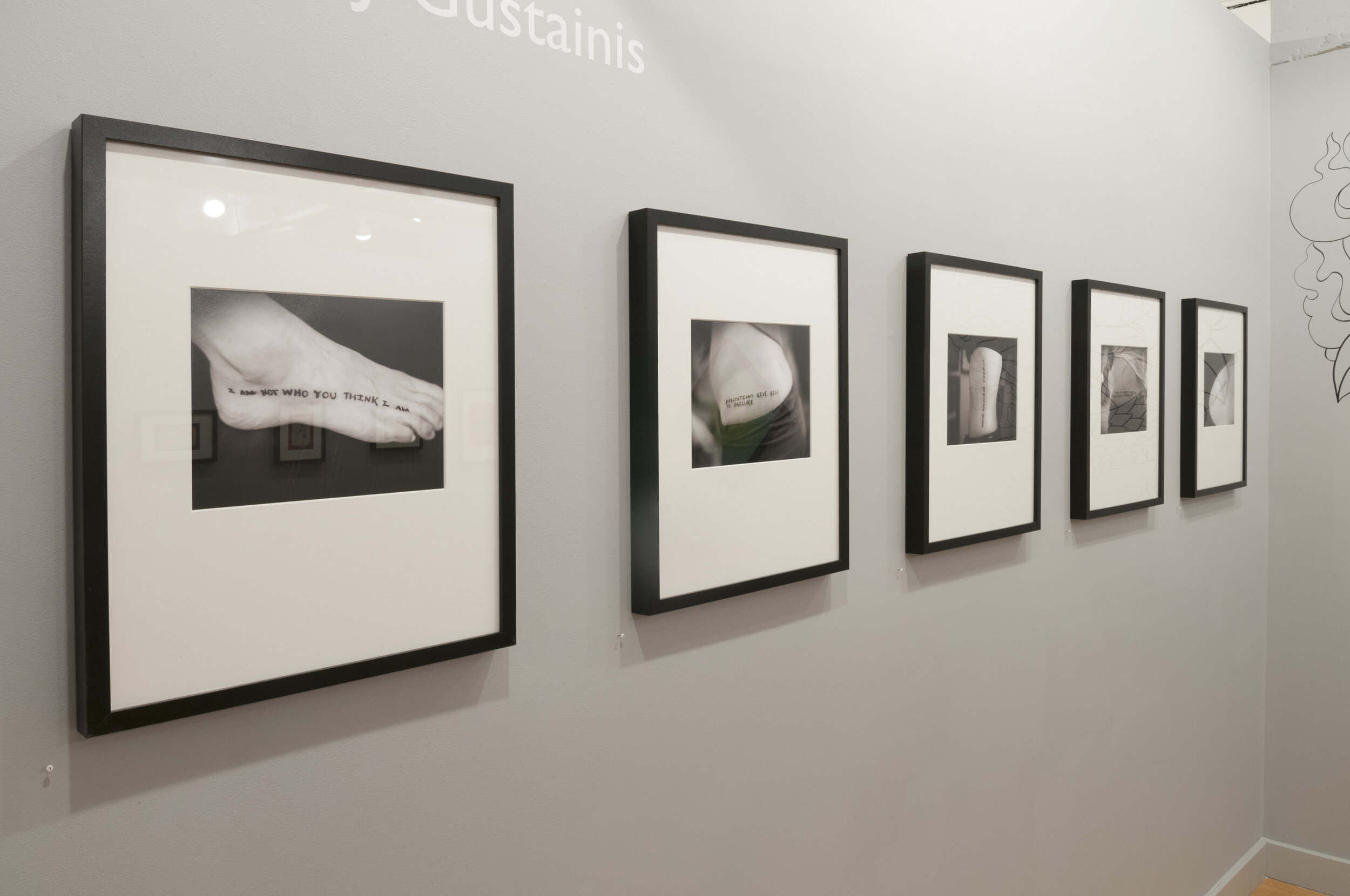
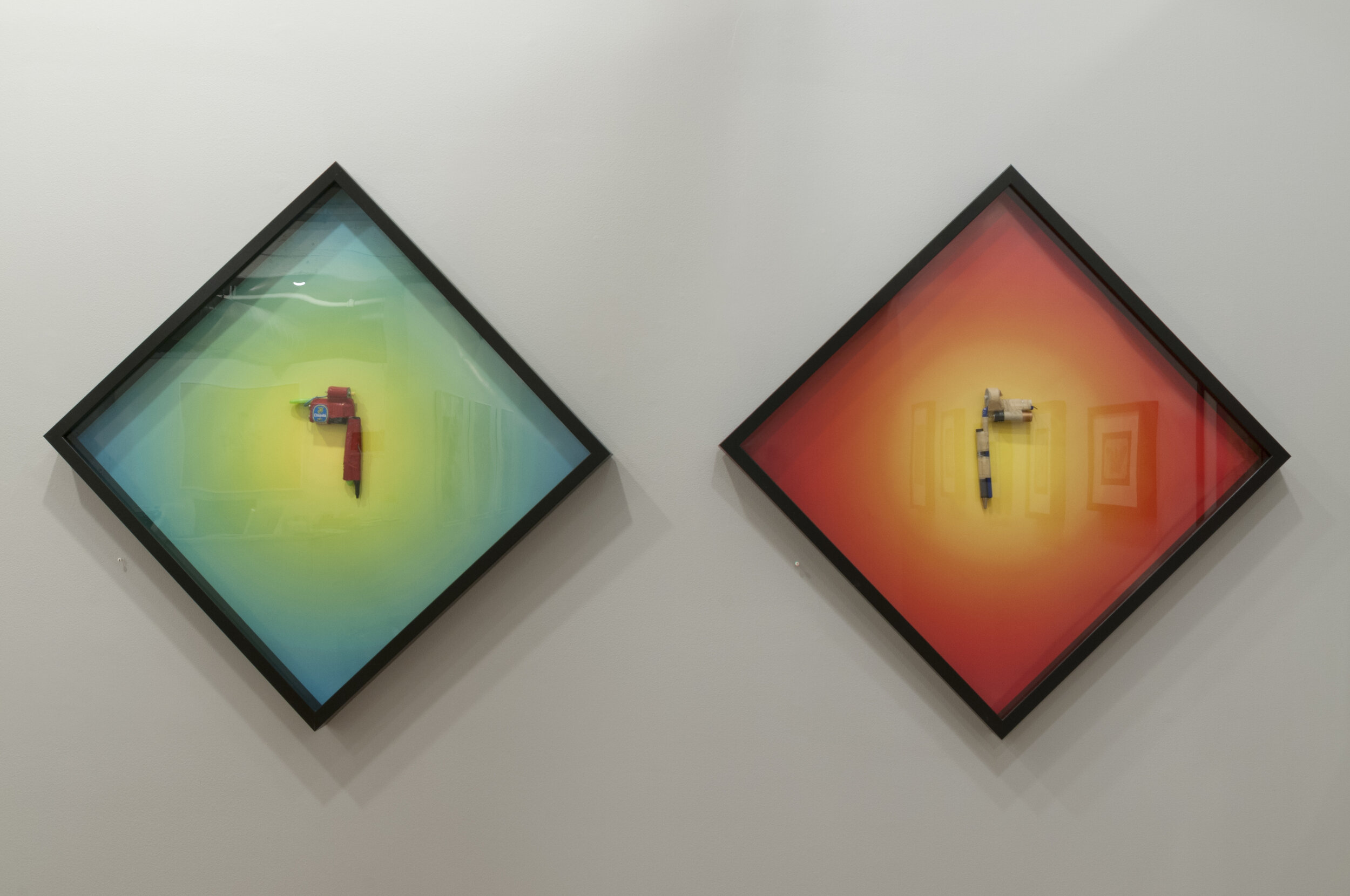

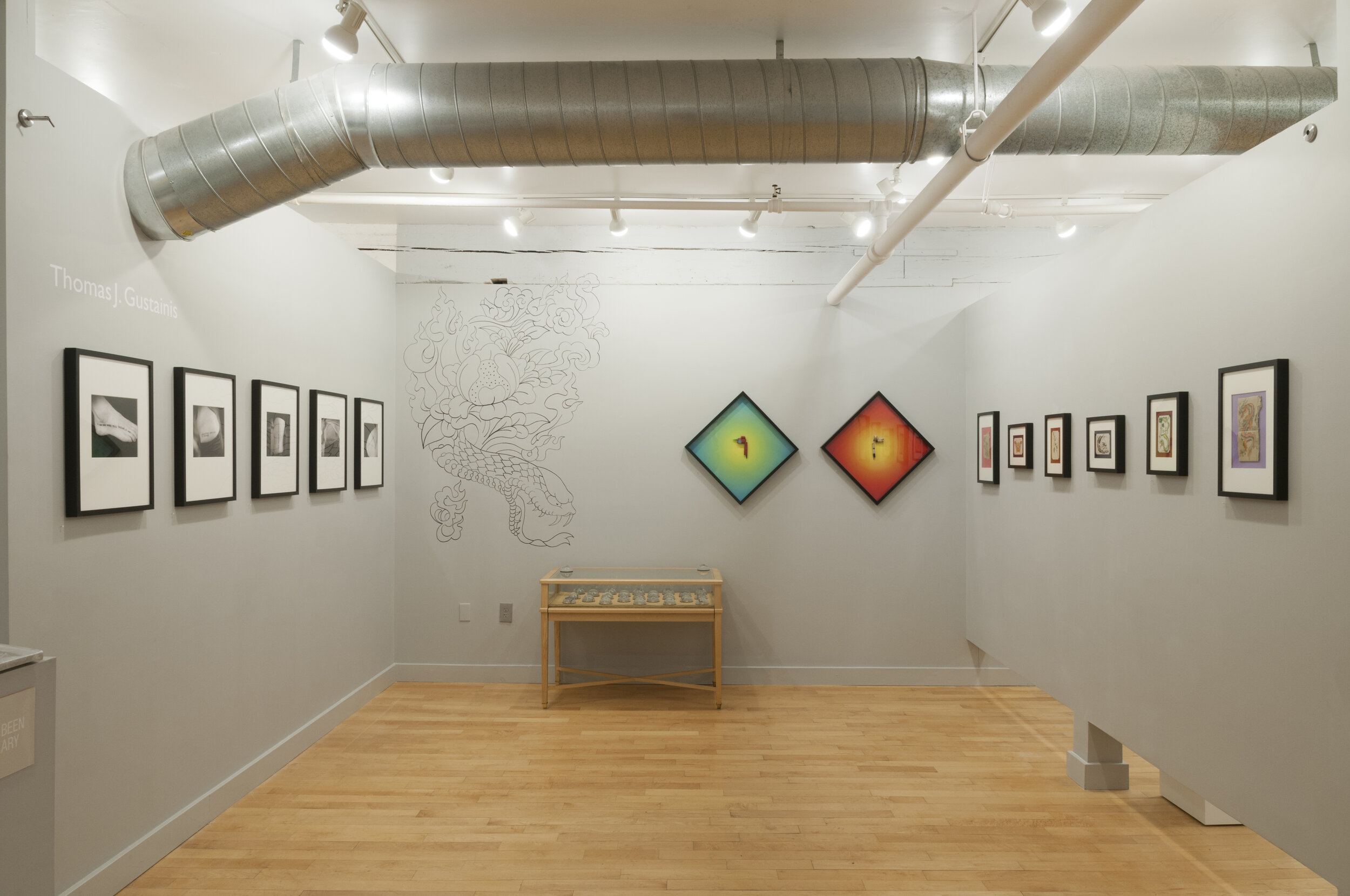
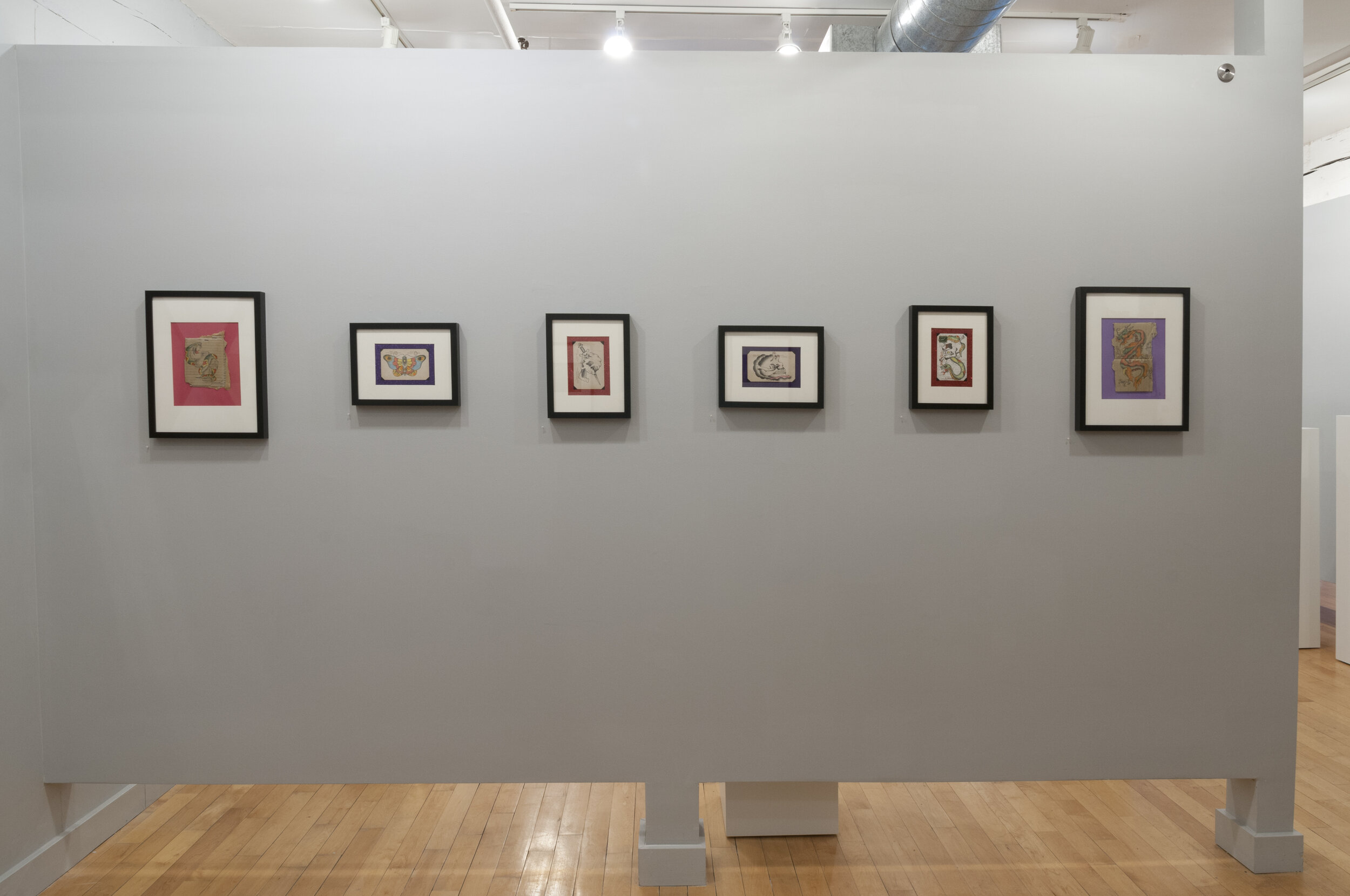
This is Gustainis’ fourth exhibit at the gallery. This newest body of work, The Body Memorial, evolves, as the earlier work has, directly from his daily life and is response to it. Now a father, teaching less, and living away from the city, Gustainis has found a different way to incorporate his art-making and livelihood by becoming a licensed tattoo artist. This exhibit features photographs of his work using the body as a canvas, drawings of proposed tattoos, and sculptural references to the craft. These are not the early tattoos from World War II or the fraternity dare—they reach across all domains and experiences.
The ultimate repository, our bodies mark the passage of time. Each scar, each wrinkle, each mark is a living reminder of an event—what we did, achieved, lost, or are subjected to. As engineered markings, tattoos are a rapidly acquired body memory, a microcosm nestled in long-term decay. Moreover, they are a conscious choice, a mark we choose to live with that creates and contextualizes our identity. Whether for better or worse, whether reflected in images or text, the tattooed body bears a cohort of messages: this is who I am. This is who I want to be. This is who I was.
The Body Memorial is a series of images of my clients who have opted to work with me on selecting a handwritten piece from a set of phrases or declarations that I have authored and who agreed to incorporate the text in to their body archive in a mutually agreed upon location. With these “embedded” texts, each individual bears the weight of the text selected, using it to challenge them and us. -Gustainis
Thomas J. Gustainis is a working artist and Assistant Professor of lens-based media. Gustainis earned his BFA from the Savannah College of Art and Design and his MFA from the School of the Museum of Fine Arts and Tufts University in 2003. His work is collected by private and corporate collections and nationally exhibited.
Jordan Kessler
Lead & Silver

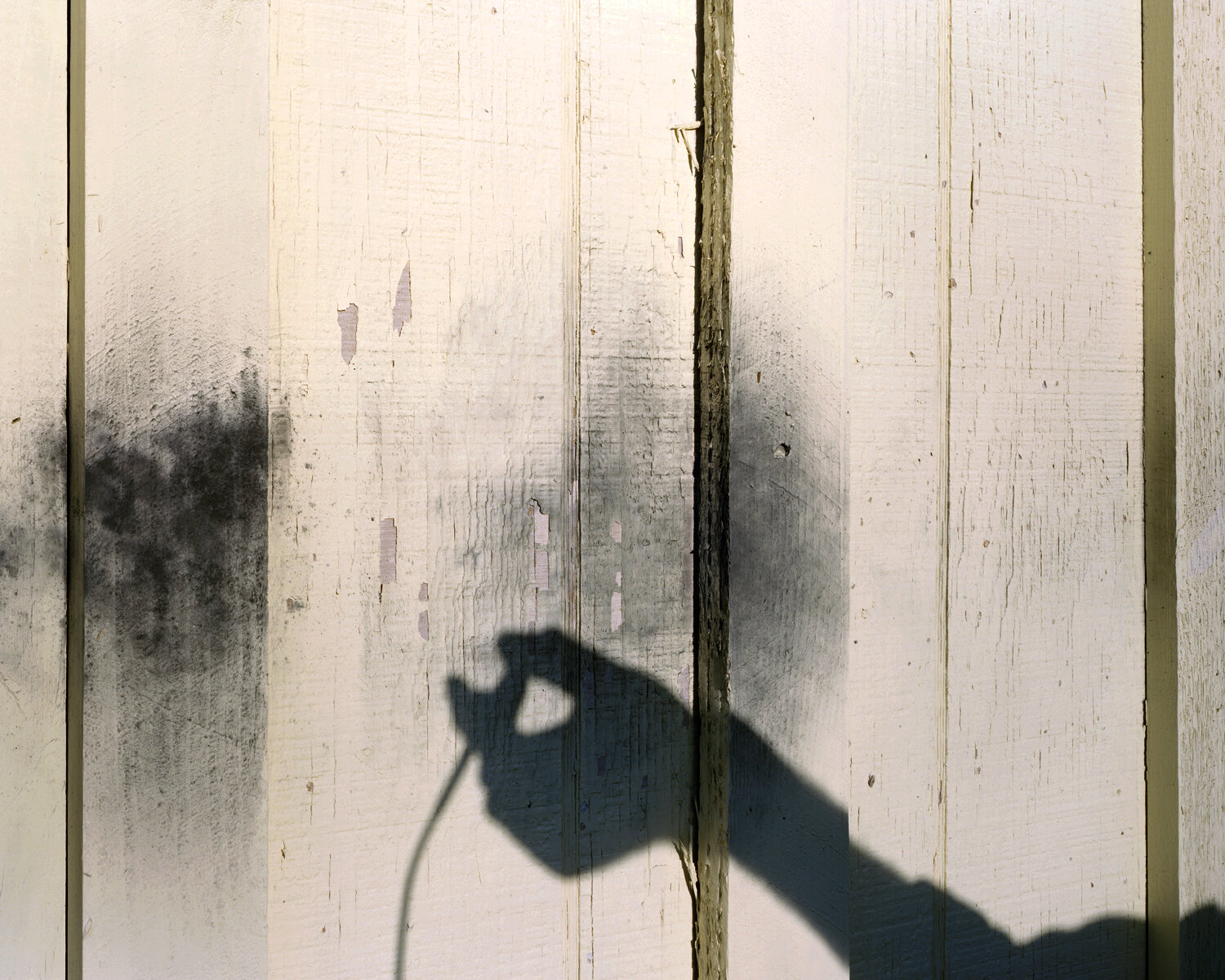

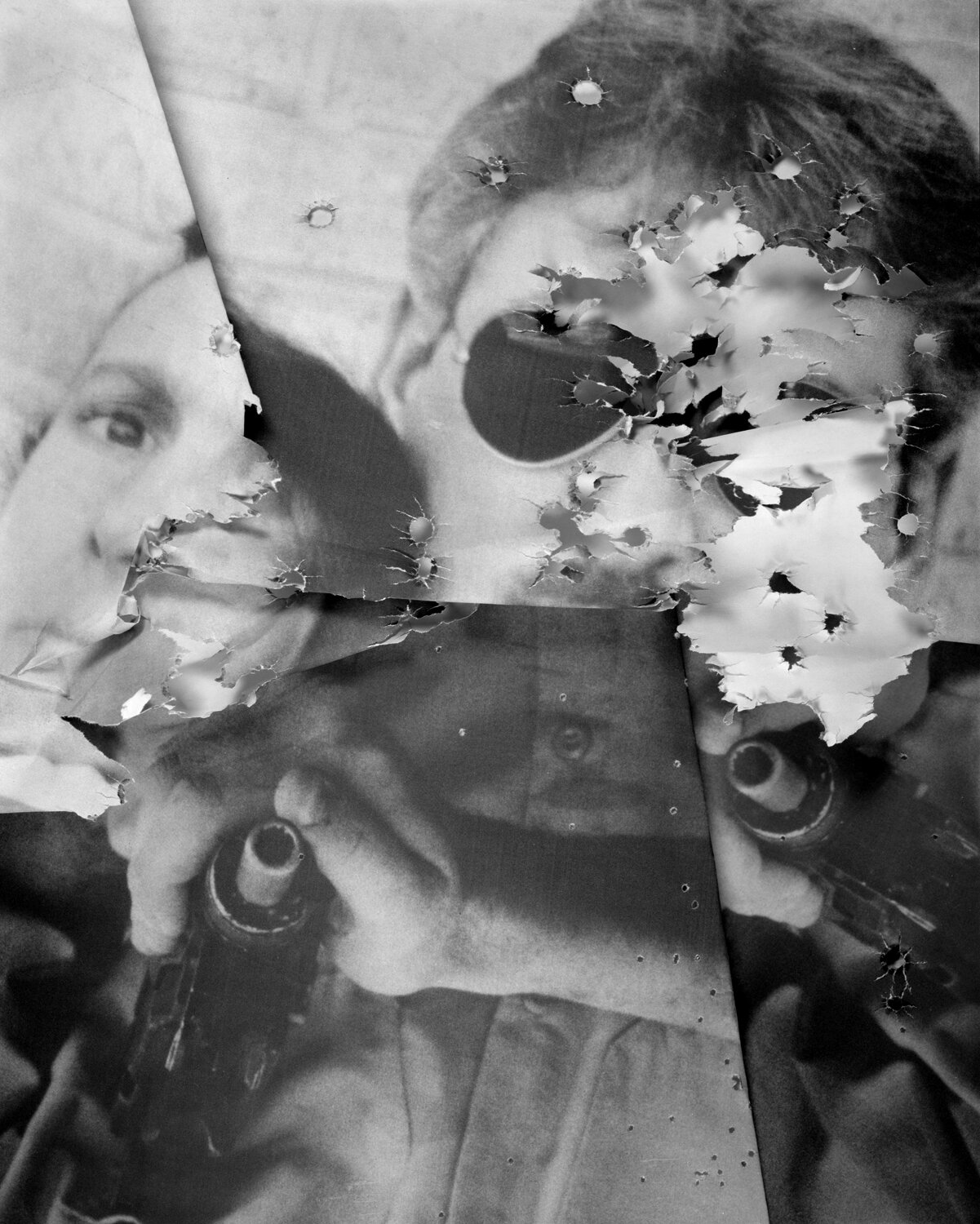
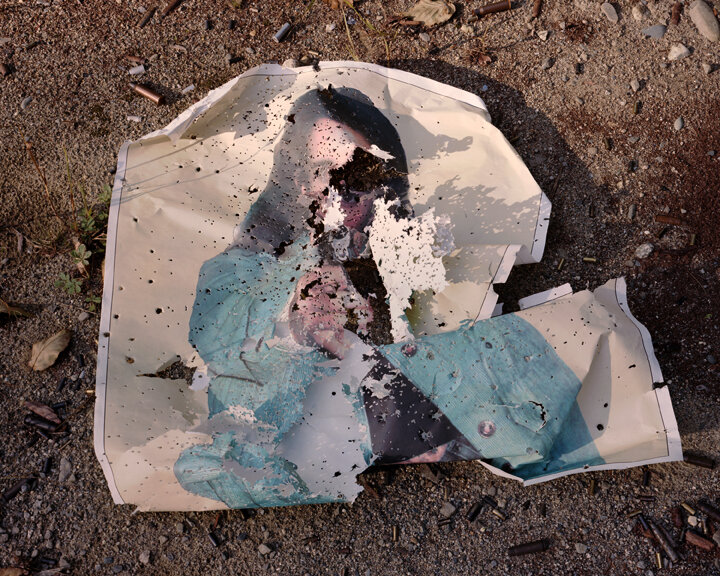
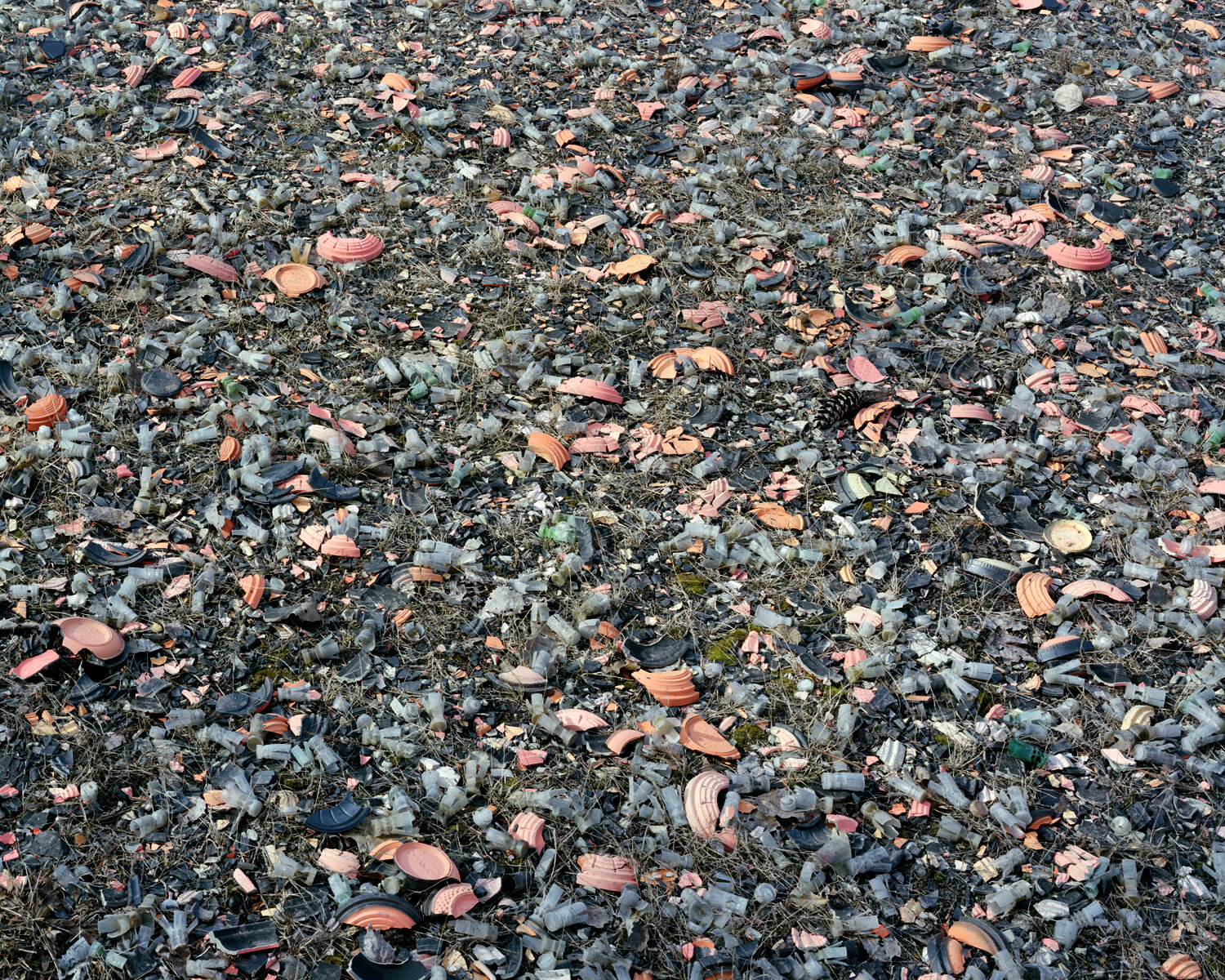
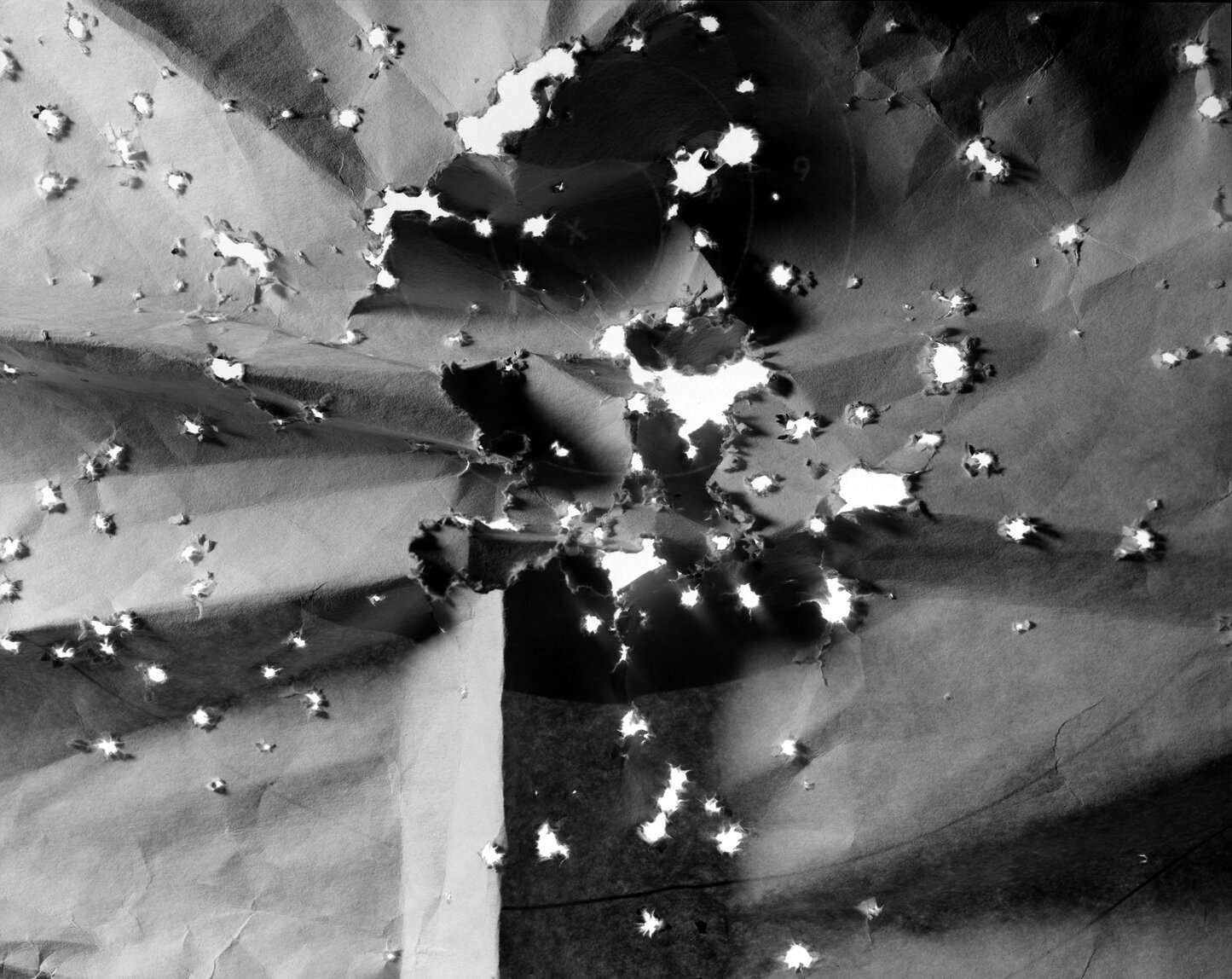
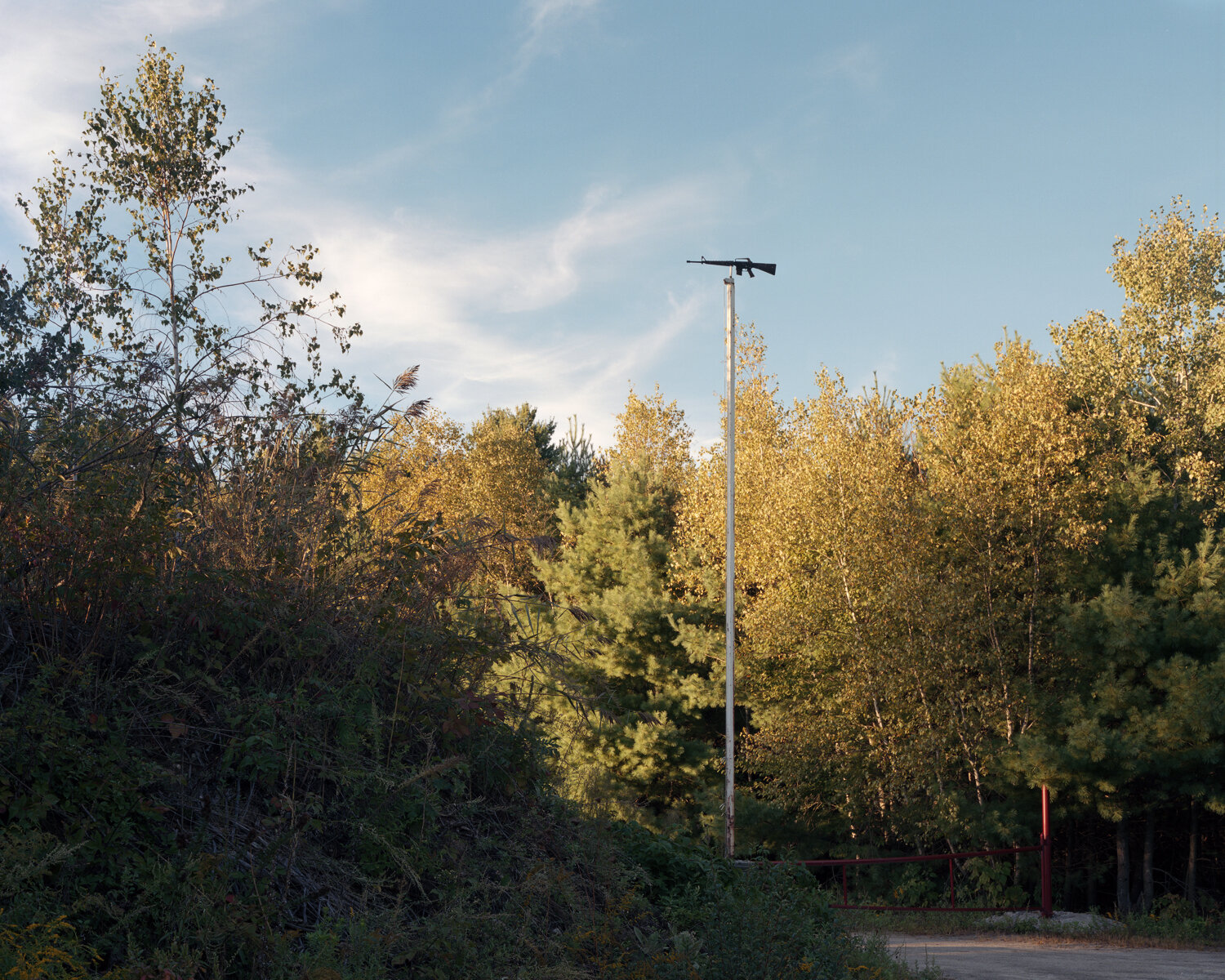
In Jordan Kessler’s exhibit, Lead & Silver, we see impressions and expressions of guns—pierced targets, detritus from a shooting range, the form-fitted packaging and presentation containers for pistols, but no guns. Luminous light panels of a golden velvet presentation case and styrofoam shipping containers glow like icons or stained glass windows. Twisted, folded, and perforated paper targets become abstract and layered images with a mystery and beauty of their own—a field on a skeet shooting range is peppered with shards of color producing a carpet of broken clay pigeons and shotgun shells. The tension between perception, identification, action, and political correctness provides an arena to explore the beauty of these objects.
Kessler received his BFA with honors in film from Massachusetts College of Art in 2001 and his MFA in photography from Massachusetts College of Art in 2013. His work has been exhibited at the Danforth Museum, Flash Forward, Massachusetts College of Art, and Gallery Kayafas. This is his first solo exhibition.
